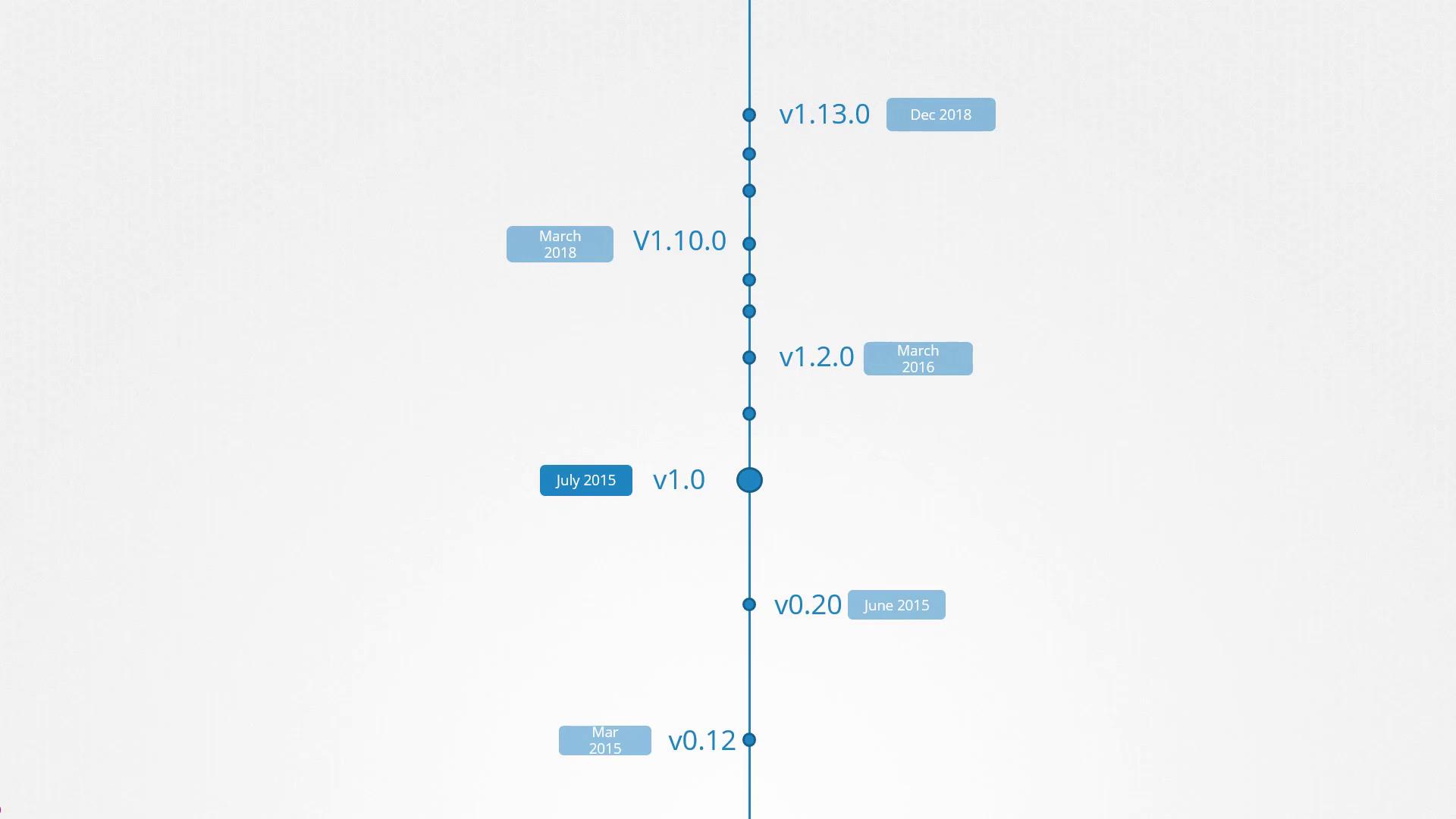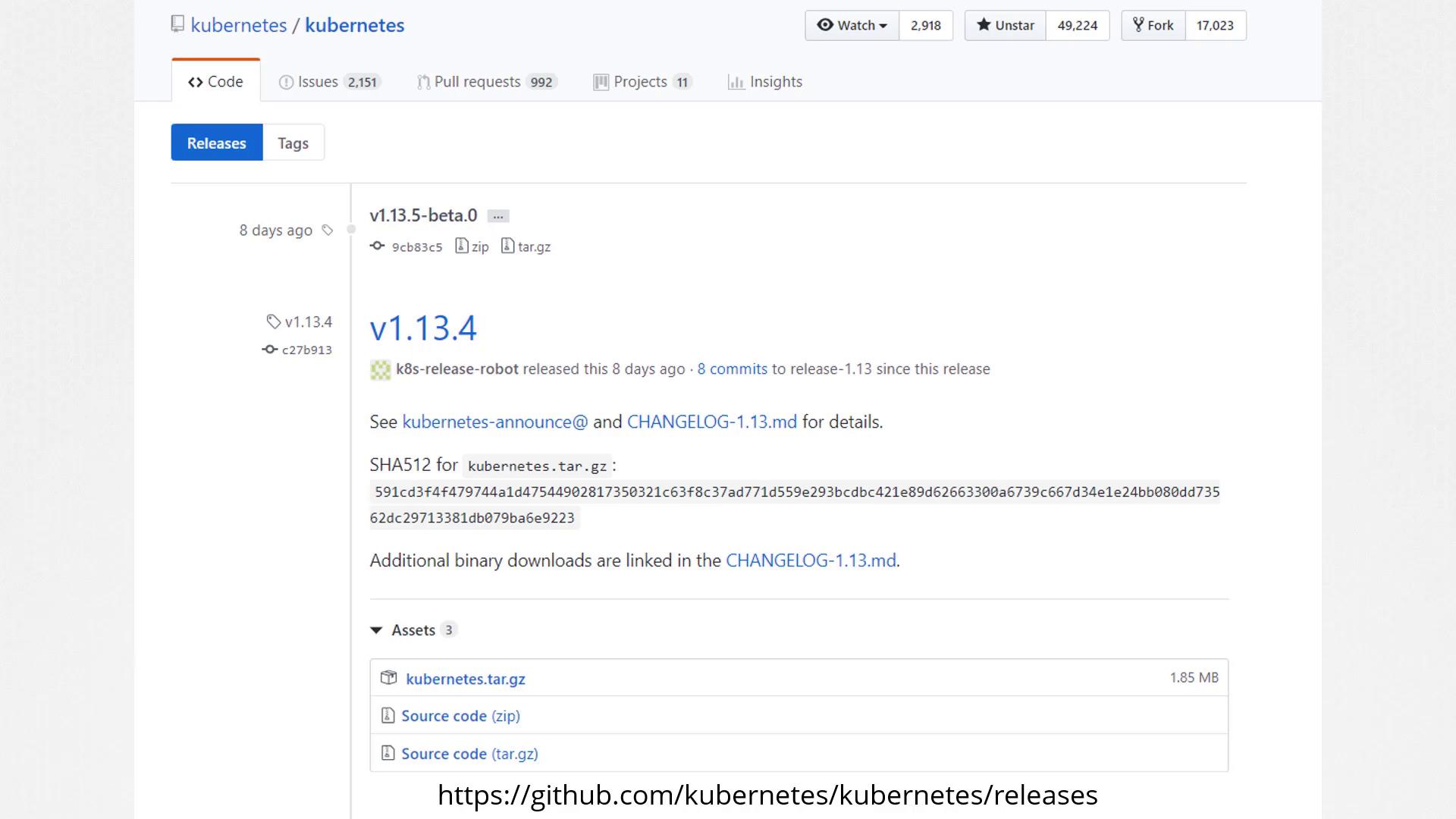Certified Kubernetes Security Specialist (CKS)
Cluster Setup and Hardening
Kubernetes Software Versions
Welcome to this article on Kubernetes Software Versions. In this guide, we will explore the evolution of Kubernetes releases, detailed version components, and the differences between stable, beta, and alpha releases.
Viewing Kubernetes Version Information
When you install a Kubernetes cluster, you deploy a specific Kubernetes version. To verify the version information for each node in your cluster, run:
kubectl get nodes
The output will display details similar to the following example:
NAME STATUS ROLES AGE VERSION
master Ready master 1d v1.11.3
node-1 Ready <none> 1d v1.11.3
node-2 Ready <none> 1d v1.11.3
Understanding Kubernetes Versioning
Kubernetes versions follow a three-part structure that includes a major, minor, and patch number. For example, the version "v1.11.3" is broken down as follows:
- Major (1): The primary release series.
- Minor (11): Introduces new features and capabilities.
- Patch (3): Focuses on bug fixes and minor improvements.

Release Types
- Minor Releases: Rolled out every few months, these include significant enhancements and new functionalities.
- Patch Releases: Issued more frequently, these updates address security patches and critical bug fixes.
The first major version, v1.0, was released in July 2015. At the time of writing, the latest stable version is v1.13.0. This article focuses on stable Kubernetes releases over time.

Alpha, Beta, and Stable Releases
Kubernetes also offers alpha and beta release channels:
- Alpha Releases: Feature new additions that are disabled by default and may be unstable.
- Beta Releases: As features mature, they enter beta, where they are enabled by default and have been thoroughly tested.
- Stable Releases: Finalized and fully supported for production use.
All official Kubernetes releases are available on the Kubernetes GitHub releases page. Each release package, such as the kubernetes.tar.gz, includes executables for all Kubernetes components along with detailed download links and checksum information.

Note
Keep in mind that while the main package includes all control plane components at the same version, other components like the etcd cluster and CoreDNS servers have independent versioning. For detailed dependency information, consult the specific release notes.
Conclusion
This article provided an overview of Kubernetes versioning and release types. Understanding these concepts is crucial for planning cluster upgrades and ensuring compatibility with your environment.
In the next article, we will discuss the process of upgrading your Kubernetes cluster from one version to another.
For further reading, consider checking out:
Watch Video
Watch video content